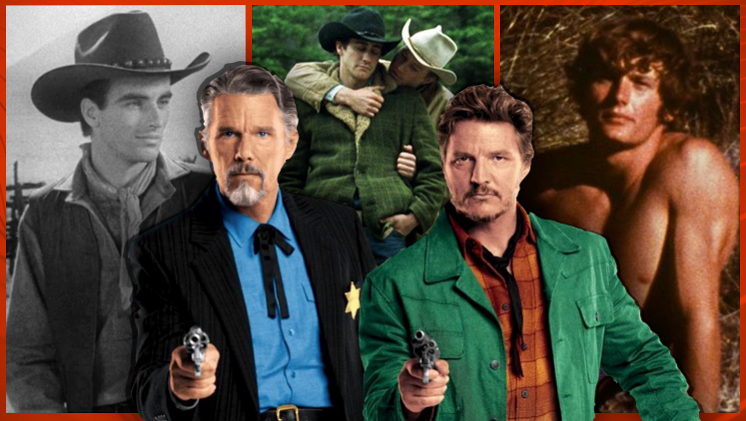
Strange Way Of Life, Pedro Almodóvar’s second English-language film, finds the Spanish master in another of his self-reflexive moods.
Mirroring his recent autobiographical masterpiece Pain And Glory, its story casts Pedro Pascal and Ethan Hawke as waylaid lovers, their characters pulled back into each other’s lives following a tragic event. Clocking in at just 31 minutes, the short is a minor work but enjoyable on its own sensuous terms, which include a generous shot of Pascal’s bare behind post-coitus.
While much of the auteur’s oeuvre looks backward on his own life and career, what distinguishes Strange Way Of Life from Almodóvar’s recent scrapbooks is that the reverse gaze is aimed at cinema itself. The movie is a meticulously detailed homage to the most hypermasculine of American film genres: the western, a cinematic tradition that dates back to the earliest days of the medium.
Strange Way Of Life was filmed in Almería, Spain, the same location that Sergio Leone shot classic spaghetti westerns like a Fistful Of Dollars. Almodóvar’s stated reference points for the film included films like John Ford’s The Searchers and John Sturges’ Gunfight At The O.K. Corral, which cemented in the American mind the cowboy as the masculine ideal.
But central to Almodóvar’s collage of inspirations is his recognition of the under-appreciated role that queerness has played in the western’s history, both its distant past and evolving present. Strange Way Of Life’s poster—in which Hawke and Pascal pose with their legs wide, guns drawn—apes both Andy Warhol’s cowboy-adjacent portraits of Elvis Presley and the pop artifice of Nicholas Ray’s bisexual melodrama Johnny Guitar. The distinctive jacket that Pascal’s Silva wears in Strange Way Of Life apes James Stewart’s costume in Bend Of The River, which features gay über-hunk Rock Hudson as a gambler who prefers the company of men.
Related:
Director Stephen Kijak on Rock Hudson’s one true love, cut scenes & his creepy talent agent
A conversation with the director of “Rock Hudson: All That Heaven Allowed” reveals how the Hollywood heartthrob captivated fans.
While Strange Way Of Life isn’t as boldly sexual as one might expect from the man behind Tie Me Up! Tie Me Down!, its deliciously carnal gaze is an indication of how far the western has come since its closeted heyday. Queer cowboys in the Golden Age of Hollywood couldn’t outwardly express their attraction for one another, forcing viewers to read between the lines, but in Strange Way of Life, the subtext is text.
Almodóvar has stated that it was his intention to say all the “words that have never been heard in a western before,” and while surely John Wayne never uttered the phrase “a dead man in your bed still smelling of cum,” the western has always been queer. It just took a century’s worth of progress before filmmakers like Almodóvar had the freedom to proclaim it openly.
The Era Of Queer Repression
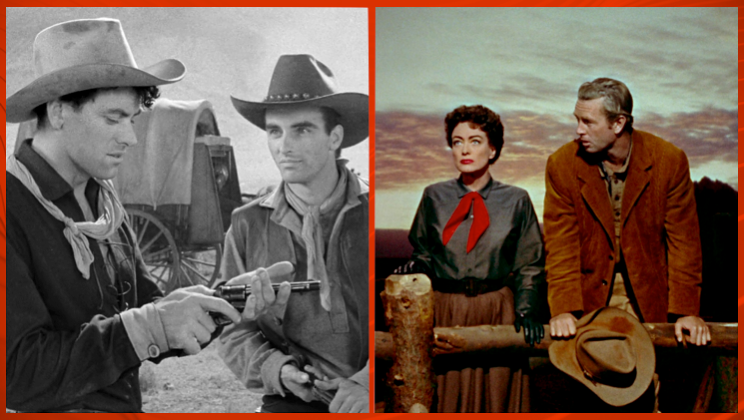
The figure most prominently associated with the western is John Wayne, who patterned his stoic machismo after real-life frontiersman Wyatt Earp. The character Wayne played onscreen was essentially a walking avatar for mid-century masculinity, but modern reappraisals suggested that Wayne’s persona was a matter of overcompensation on the part of his most frequent collaborator.
Director John Ford was a closeted gay man—as Maureen O’Hara, who worked with him on A Quiet Man, asserted in her biography—and he created Wayne in the image of the man he could not be: rugged, individualistic, and above all, heterosexual. On Stagecoach, Wayne’s breakout role, Ford reportedly berated his leading man between takes for “skipping like a goddamn fairy,” an admonition that would lay the groundwork in establishing the actor’s trademark gait.
If the very foundations of the western were laid in opposition to queerness, it’s wonderfully ironic then that one of Wayne’s most acclaimed and enduring efforts is so incredibly gay: Red River, which offered Montgomery Clift his first on-screen credit. Clift—who was either gay or bisexual in his personal life—appears as Matt Garth, the adoptive son of Wayne’s Thomas Dunson, a rancher nearly driven mad by his ambition to lead a herd of cattle along the Chisholm Trail.
Although Matt is eventually paired off with a token female love interest, he has the most chemistry with professional gunman Cherry Valance (John Ireland), whose delicious name is a drag persona waiting to be claimed. In a now-infamous scene, Cherry and Matt admire each other’s guns. “That’s a good looking gun you were about to use back there,” Cherry says as they trade weapons. “Can I see it?”
The queerness of Red River is so painfully overt that it’s hardly even subtextual, which film writer and historian Marya Gates asserts was likely intentional on the part of its director, Howard Hawks. Gates, who specializes in pre-1960 cinema, says that Hawks’ films “push the line of sexuality in general”: from Cary Grant’s knowing quip in Bringing Up Baby that he “just went gay all of a sudden” to what she calls the verbal “dry humping” between Humphrey Bogart and Lauren Bacall in The Big Sleep. (In a telling indication of where Hawks’ head was at when casting the film, Grant—who was rumored to be bisexual—was the first choice for Cherry.)
Gates says that even contemporaneously, Hawks acknowledged that he “was crossing the line sexually” during the film’s press tour. “Just watching them look at each other, who looks at each other like that except for people who want to have sex together?” she says of Cherry and Matt’s phallic meet cute.
Red River’s barely repressed homosexuality was the norm for westerns (and movies in general) operating under the Hays Code, a set of moral standards imposed by the film industry from 1934 to their abolishment in 1968. Whereas the Pre Code-era gave birth to films as queer as Wings and Queen Christina, the production code formally banned any explicit depictions of same-sex relationships as “perversion.” But even while non-westerns like Alfred Hitchcock’s Rope and Strangers On A Train bypassed the code by not stating their protagonists’ sexual leanings, it’s frankly amazing how much Red River got away with—including a treasured bracelet unmistakably shaped like a penis.
Later in Red River, a trailhand played by Walter Brennan refers to the relationship between Cherry and Matt as a “peculiar kind of fun, sizing each other up for the future.” “Thems two gonna tangle for certain,” he remarks, with the word “tangle” standing in for what the filmmakers were not permitted to say.
Related:
From Roman emperors to rowdy cowboys, Hollywood’s depiction of masculinity has always been, well, pretty gay
Hollywood has always been flush with queer artists, both behind and in front of the camera, telling stories that have simmered with subliminal same-sex desire, particularly between men who are meant to represent masculine ideals.
Queer westerns in the Golden Age of Hollywood were defined by the tensions simmering under the surface. Although Vienna, played by the bisexual Joan Crawford at her most imperiously severe, eventually finds the arms of the titular Johnny Guitar in the film of the same name, she is ensnared in a psychosexual quarrel with her nemesis, Emma Small (Mercedes McCambridge), who either wants to destroy her or take her to bed.
The casting in films like Johnny Guitar says so much of what its creative team could not: Although McCambridge was straight in her personal life, the critic Roger Ebert once remarked that she played queer in the movies—portraying the lesbian leader of a Mexican biker gang in Orson Welles’ Touch of Evil just four years later. “All of the sexual energy is between the two women, no matter what they say about the men,” Ebert wrote of Johnny Guitar, noting that Emma can’t “tear her eyes away from Vienna” whenever Crawford is onscreen.
Almodóvar, ever the film scholar, has had his eyes on the dynamics of classic Hollywood westerns for years. Although his films are known for their sexual frankness—from the gay love triangle of Law Of Desire to the baby-snatching bisexual soap opera of Parallel Mothers—they often deal in unspoken longings.
And even from his earliest works, it’s clear that Almodóvar has had the systemic repression of Hollywood’s Golden Age on his mind: In Women On The Verge Of A Nervous Breakdown, the Oscar-nominated 1988 black comic farce that announced him as an international talent, the recently jilted Pepa Marcos (Carmen Maura) makes her living doing voice dubbing work for foreign films. Her latest assignment? None other than Johnny Guitar.
Tearing Open The Closet
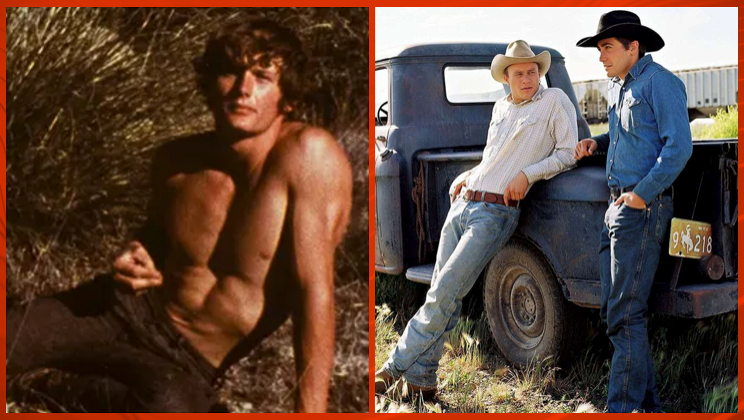
The earliest western to allow its characters to be openly queer is often credited as Andy Warhol’s Lonesome Cowboys, a bit of avant-garde softcore that lingers lovingly on the shirtless torso of its male characters. Although it doesn’t go so far as to depict explicit queer intercourse, the film’s foreplay includes a five-minute wrestling sequence that finishes with a pile of scantily clad men caressing each other’s mouths.
Lonesome Cowboys was targeted by a police raid when it was screened at an Atlanta movie theater in August 1969, 29 years before the Supreme Court of Georgia ruled statewide laws criminalizing same-sex sexual activity to be unconstitutional. The incident, which took place just over a month after the Stonewall Riots in New York, had a similarly galvanizing effect on Atlanta’s LGBTQ+ community, leading to the formation of the Georgia Gay Liberation Front and the city’s first Pride festival. But even in an era during which the Hays Code was technically defunct, the raid illustrated that queer censorship on screen would not be enforced by Hollywood but the law.
Progress during this period would be extremely slow, which is why many of the few queer westerns that do get made have a satirical bent to them. Lonesome Cowboys, for one, was intended as a send-up of tired tropes within the genre, while the drag comedy Lust In The Dust (featuring John Waters’ muse, Divine, and gay actor Tab Hunter) directly parodied King Vidor’s Duel In The Sun, a misbegotten western spin on Gone With The Wind.
There are outliers on the still-emerging independent film scene—the experimental Song of the Loon and Zachariah among them—but if those were the exceptions, the rule looked more like the quasi-western Zorro, The Gay Blade. A sub-Mel Brooks comedy featuring George Hamilton as Bunny Wigglesworth, the improbably named offspring of his swashbuckling father, the mostly benign movie essentially boils down a single joke: What if Zorro liked men?
Queer westerns wouldn’t have their mainstream moment for another two decades, with the absolute hysteria that surrounded Brokeback Mountain’s 2005 release. An adaptation of the tragic E. Annie Proulx story, the film starred Heath Ledger and Jake Gyllenhaal as sheepherders who succumb to the gravitational erotic pull that the cinematic cowboys of old Hollywood were forced to outwardly deny themselves.
Christopher Packard, author of the 2005 book Queer Cowboys, says that Brokeback Mountain merely recognized what had been true all along: that LGBTQ+ people have been present since the very beginnings of the Old West. The western frontier, he says, was a very appealing option for queer men who were forced out of their families and communities by societal rejection, and the archetype of the cowboy would unknowingly reflect that. “The myth never allowed the cowboy to be married to a woman, but the cowboy is never alone,” Packard says. “He’s always got his partner, who’s very often Brown or Black. That partnership resembles a marriage, and it gives the cowboy the companionship without the obligation.”
Although homosexual pairings have, indeed, been common among cowboys, the cultural panic surrounding Brokeback Mountain’s mocked the seeming incongruity of these two phenomena. Brokeback Mountain jokes, in particular, became a staple of late-night monologues, with Tonight Show host Jay Leno reportedly reportedly making 15 references to the film within a single month. A list of 30 “rejected movie titles” that circulated online at the time suggested that the film could have also been called “Prances with Wolves” and “Oklah-omo.”
“Being gay and masculine are supposedly antithetical,” says Harry Benshoff, a professor of media arts at the University of North Texas. “To put queerness into that kind of icon of heteronormative masculinity was really challenging for a lot of people.”
While defenders claimed the quips were all in good fun, they spoke to a real discomfort with Brokeback Mountain: Academy members like Tony Curtis and Ernest Borgnine openly admitted that they refused to watch the movie, the latter claiming that John Wayne was “rolling over in his grave,” and the film ultimately lost Best Picture to Crash in a now-infamous upset.
Related:
Still can’t quit: A brief history of Jake Gyllenhaal’s comments on ‘Brokeback Mountain’
Making the movie changed him. Watching it changed us, too.
But if nothing else, Brokeback Mountain’s widespread critical acclaim and box-office success—bringing in $178 million globally—would help pave the way for a generation of films that would further break down the western’s closet doors. Lee’s movie heralded a coming wave of meta-westerns that examined the genre’s relationship to masculinity: from less overtly queer efforts like Chloe Zhao’s The Rider to Jane Campion’s Oscar-winning The Power Of The Dog, in which sexual repression is a destructive, deadly force. Based on a book by gay author Thomas Savage, the film suggests that the cruelty displayed by ranch owner Phil Burbank (Benedict Cumberbatch) resulted from losing the only person he ever loved: his departed mentor, Bronco Henry.
While the slippery script never clarifies if the relationship was a sexual one, The Power of the Dog answers all the questions it needs to in a scene of Phil masturbating after caressing his body with Bronco Henry’s scarf, the only keepsake of him Phil has left.
The Queer Western’s Bright Future
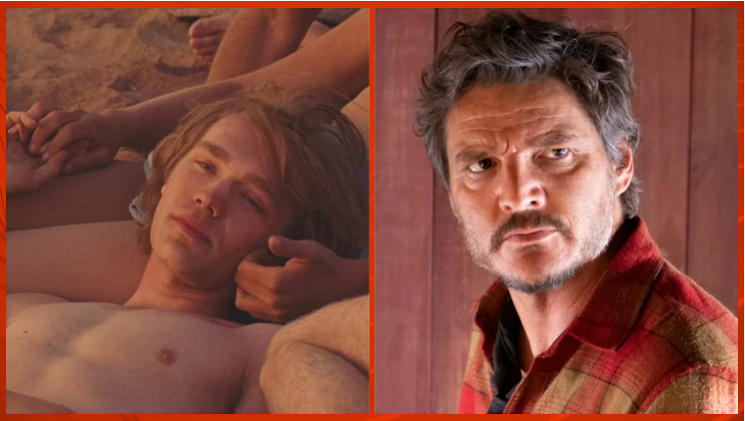
If Strange Way Of Life is among the boldest entries in the western’s queer new wave, Almodóvar is certainly not alone in allowing his characters to enjoy the earthly pleasures so long denied them by the genre. Luke Gilford’s upcoming National Anthem filters the western through a queer coming-of-age lens: Dylan, a shy 21-year-old construction worker, begins to bloom after being adopted into a community of LGBTQ+ ranchers in rural New Mexico.
For Gilford, the film was autobiographically based on his experiences of stumbling across a gay rodeo, which he says made him want to push back even further against the cliché of the “deep-voiced, rugged, rough cowboy” in favor of celebrating “the feminine and the masculine.” “Charlie Plummer, who plays Dylan, is a bit androgynous,” he says. “He, as a character, is brave enough to try bull-riding for the first time but also drag for the first time. I’ve never seen that depicted in a western before, and I thought it was about time for us to see a character that complex.”
Contemporary westerns are broadening film’s horizons by depicting, as Almodóvar said himself, everything the genre has left unsaid for decades.
Craig Boreham’s neo-Austrialian western Lonesome updates the dusty cinematic form to reflect contemporary gay life: A gay man moves to Sydney after an outing forces him to leave his local community, and he searches for his identity in the big city through a series of Grindr hookups. Along with National Anthem, Anna Kerrigan’s Cowboys is the rare western centered on a trans narrative: A father, portrayed by a grizzled Steve Zahn, leads his transgender son through the Montana wilderness to seek safety in Canada, where he can live as himself.
It makes a certain amount of sense that Almodóvar would make his first western at a time when the genre is headed in bold new directions: He was originally attached to direct Brokeback Mountain but feared that he would be required to sanitize the love scenes for heterosexual audiences and dropped out of the film.
What’s so refreshing about Strange Way Of Life is that the movie feels like the kind of western that Almodóvar needed to make all along: unapologetically horny and unafraid to acknowledge the truth that there is no authentic western without queer people. No matter what society tells them they are or should be, men like Silva and his starcrossed Jake—and the real-life cowboys they represent—are searching for connection and intimacy, camaraderie and community on their own terms, if they don’t shoot each other first.
As the modern queer western gazes upon the horizon, the evolving genre is responding to an unresolved question presented in Brokeback Mountain, when Ennis—despairing of the impossibility of his doomed love—asks Jack what two men together can do on a ranch. In Strange Way of Life’s final moments, Silva provides an answer: “Protect each other. Look after one another.”
Strange Way Of Life begins playing in theaters nationwide on October 6.


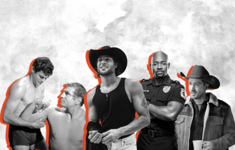


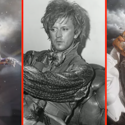

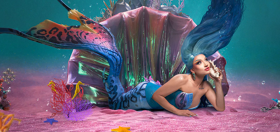


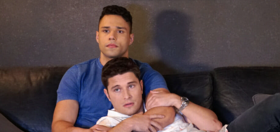

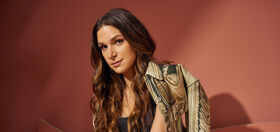







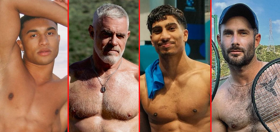
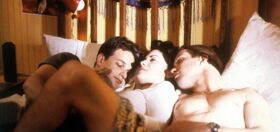
dbmcvey
Almodovar is one of the greatest directors ever. Even his lesser work is worth watching.
SDR94103
straight guys playing gay is not a win.
dbmcvey
It’s Pedro Pascal and Ethan Hawke directed by Almodovar.
That’s a win.
Pietro D
How about Gay dudes playing it Str8?
Might that work for you, asshat!
Bob M
I don’t believe it’s been firmly established that Pascal is 100% straight
Diplomat
You forgot How the West Was Hung by All Worlds Video.
kcwlsw
Wait a second. Joan Crawford was bisexual???!!! They sure did not cover that in Mommie Dearest.